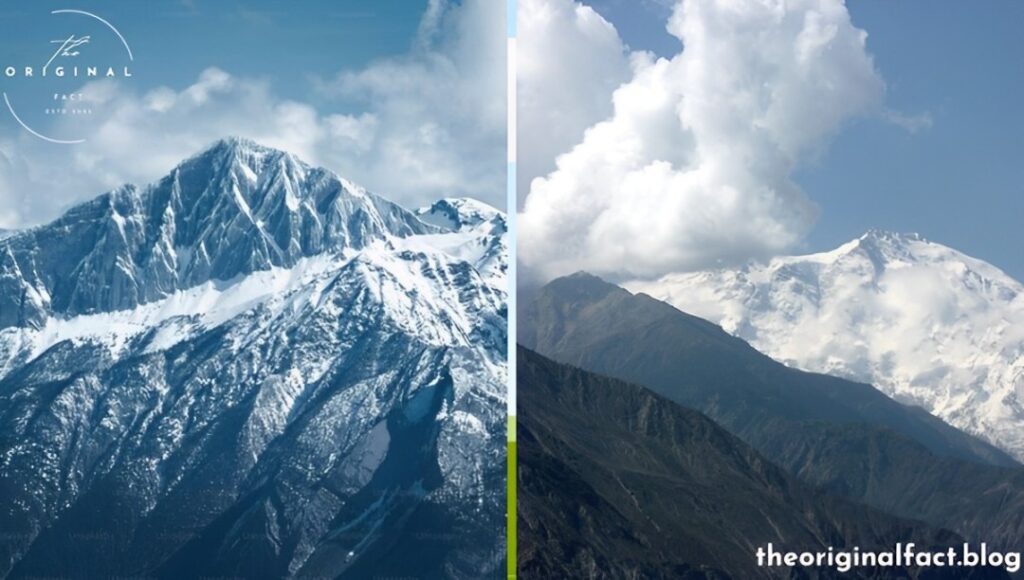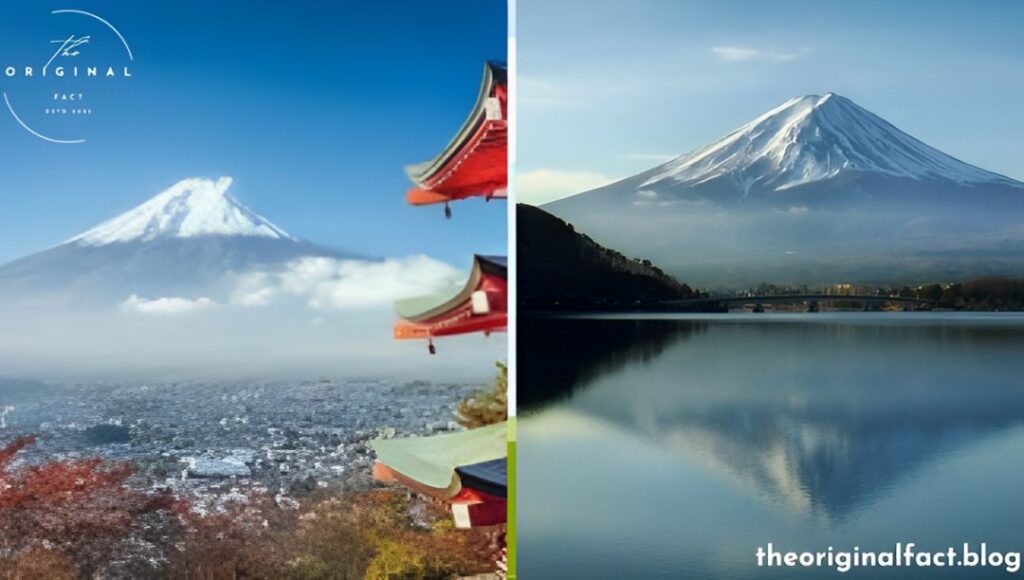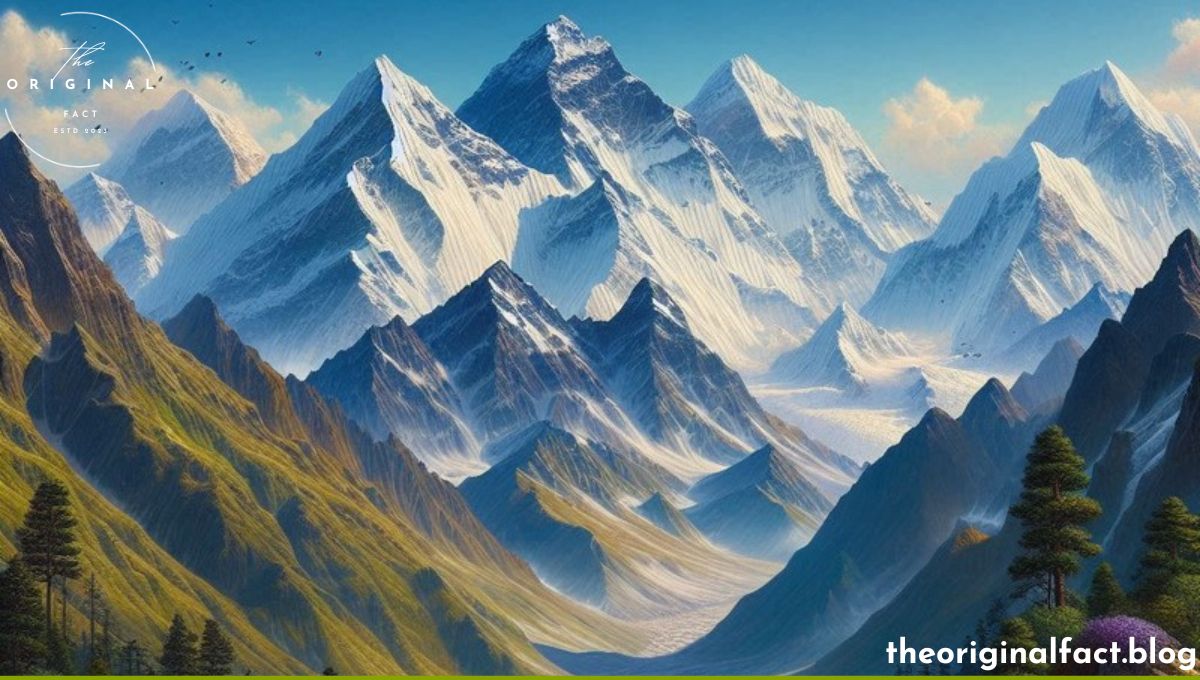Table of Contents
Highest Mountains in the World
Mountains hold that peculiar relation with human imagination, poised as gigantic sentinels, both defiant of and inspiring to the human soul. Over millions of years, Nature has been chiseling these masterpieces out of stone, for the most part in silent secret, through the unremitting process of tectonic movement and weathering. From snow-bound summits of the Himalayas to the jagged-edged spires of the Andes, the highest mountains in the world afford an unparalleled spectacle of the geological splendors of Earth.
Their gigantic size, standing above the grasslands and deep valleys, helps to make one appreciate such an amazing sight as a result of the great power and beauty of the planet. Each mountain range, including the very highest mountains in the world, unfurls a different tale in natural history that states a lot about its own formation, climate, and ecosystem. These towering giants allow an examination of those processes by which our world has evolved over millennia.

Yet beyond their physical grandeur, mountains symbolize much to most cultures and religions. According to various traditions, they are the dwelling place of gods and spirits; to many, they mean some sort of transcendence-clean and pure. For instance, Mount Everest, the Earth’s highest peak and one of the highest mountains in the world, is considered the holiest point and is referred to by the Tibetans as “Chomolungma” or “Goddess Mother of the World”.
Japan’s Mt. Fuji no longer is just a graciously shaped volcanic cone but also a place held in reverence within the country’s cultural and religious topography, epitomizing the spiritual significance of the highest mountains in the world. Such landform features naturally evoke feelings that can best be described as reverential, realizing man’s connectedness with nature and the universe.

But the world’s highest peaks also represent an enormous treasure from the ecological point of view. Attention is drawn not only because of their spiritual and cultural importance but also for representing protected areas of wild biodiversity. These colossi offer shelter to different ecosystems, specially adapted to the varied conditions of different altitudes: slopes can be covered with concentrated forest vegetation, alpine meadows, or can even take the form of a total barren, stony surface hosting various types of flora and fauna.
Isolation of mountain ranges normally brings about the development of specific species, making them hotspots of biodiversity. In addition to that, mountains contribute much to regulating Earth’s climatic and hydrological cycles, serving as natural water towers that provide freshwater to millions of people globally. The combination of ecological richness with the environmental importance of such ecosystems underlines the need for their preservation for present and future generations.
Above all, the highest mountains in the world are a source of awe and adventure. From a distance or close-up, they reflect a deep sense of wonder. It’s not just the beauty that is true but all the stories that emanate from them and all the life they harbor. They are the highest mountains in the world and set up an unparalleled backdrop for those in search of solitude, deep spiritual attachment, or a hint of adventure. They remind us of the tenuous balance between the fierceness and fragility of nature, enjoin us to protect natural cathedrals, and bask in their beauty given to our world.To read More: Click here
Here’s a list of the top 50 mountains in the world, ranked primarily by their elevation:
| Serial | Mountain Name | Height (m) | Location |
| 1 | Mount Everest | 8848.86 | Nepal/China (Tibet) |
| 2 | K2 (Mount Godwin-Austen) | 8611 | Pakistan/China |
| 3 | Kangchenjunga | 8586 | Nepal/India |
| 4 | Lhotse | 8516 | Nepal/China (Tibet) |
| 5 | Makalu | 8485 | Nepal/China (Tibet) |
| 6 | Cho Oyu | 8188 | Nepal/China (Tibet) |
| 7 | Dhaulagiri I | 8167 | Nepal |
| 8 | Manaslu | 8163 | Nepal |
| 9 | Nanga Parbat | 8126 | Pakistan |
| 10 | Annapurna I | 8091 | Nepal |
| 11 | Gasherbrum I | 8080 | Pakistan/China |
| 12 | Broad Peak | 8051 | Pakistan/China |
| 13 | Gasherbrum II | 8035 | Pakistan/China |
| 14 | Shishapangma | 8027 | China (Tibet) |
| 15 | Gyachung Kang | 7952 | Nepal/China (Tibet) |
| 16 | Annapurna II | 7937 | Nepal |
| 17 | Gasherbrum III | 7946 | Pakistan/China |
| 18 | Gasherbrum IV | 7925 | Pakistan/China |
| 19 | Himalchuli | 7893 | Nepal |
| 20 | Distaghil Sar | 7885 | Pakistan |
| 21 | Ngadi Chuli | 7871 | Nepal |
| 22 | Nuptse | 7861 | Nepal/China (Tibet) |
| 23 | Khunyang Chhish | 7852 | Pakistan |
| 24 | Masherbrum | 7821 | Pakistan |
| 25 | Nanda Devi | 7816 | India |
| 26 | Chomo Lonzo | 7804 | China (Tibet) |
| 27 | Batura Sar | 7795 | Pakistan |
| 28 | Kanjut Sar | 7790 | Pakistan |
| 29 | Rakaposhi | 7788 | Pakistan |
| 30 | Namcha Barwa | 7782 | China (Tibet) |
| 31 | Kamet | 7756 | India |
| 32 | Saltoro Kangri | 7742 | Pakistan/India |
| 33 | Jannu | 7710 | Nepal |
| 34 | Tirich Mir | 7708 | Pakistan |
| 35 | Molamenqing | 7703 | China (Tibet) |
| 36 | Gurla Mandhata | 7694 | China (Tibet) |
| 37 | Saser Kangri I | 7672 | India |
| 38 | Kula Kangri | 7664 | China/Bhutan |
| 39 | Kongur Tagh | 7649 | China (Xinjiang) |
| 40 | Shispare | 7611 | Pakistan |
| 41 | Trivor | 7577 | Pakistan |
| 42 | Gangkhar Puensum | 7570 | Bhutan/China (Tibet) |
| 43 | Muztagh Ata | 7546 | China (Xinjiang) |
| 44 | Gasherbrum V | 7432 | Pakistan/China |
| 45 | Sherpi Kangri | 7380 | Pakistan/India |
| 46 | Saser Kangri II | 7518 | India |
| 47 | Diran | 7266 | Pakistan |
| 48 | Momhil Sar | 7343 | Pakistan |
| 49 | Malubiting | 7458 | Pakistan |
| 50 | Ultar Sar | 7388 | Pakistan |
To Read About the Top 50 Wealthiest People: Click here

